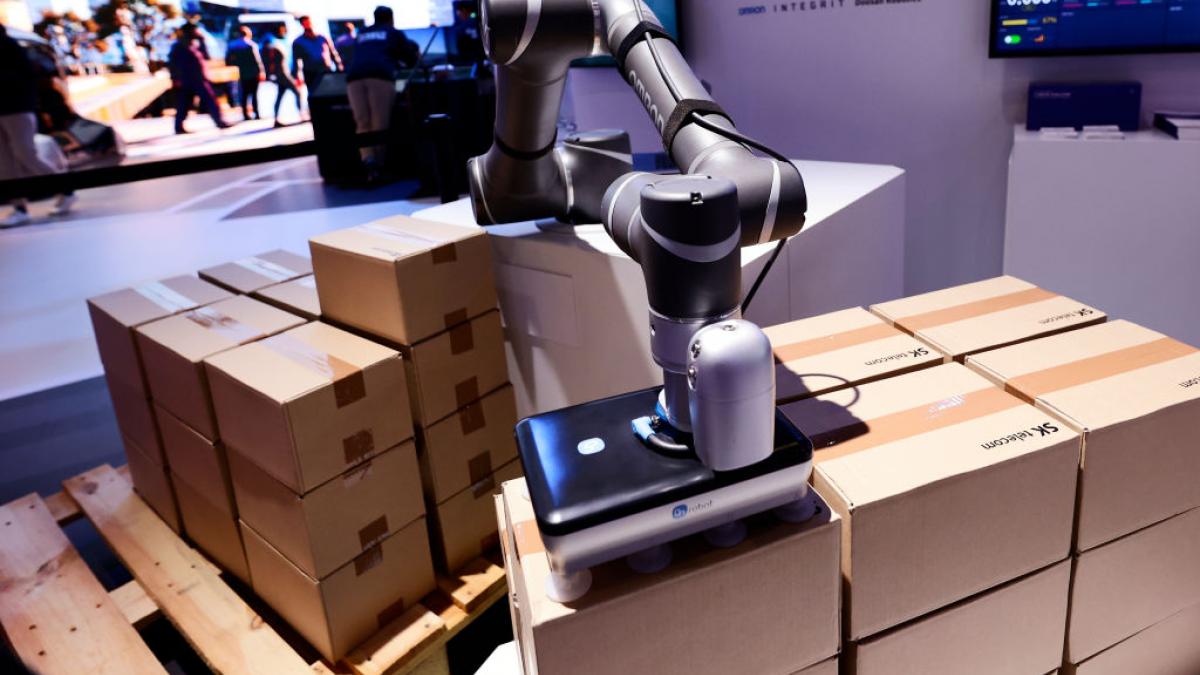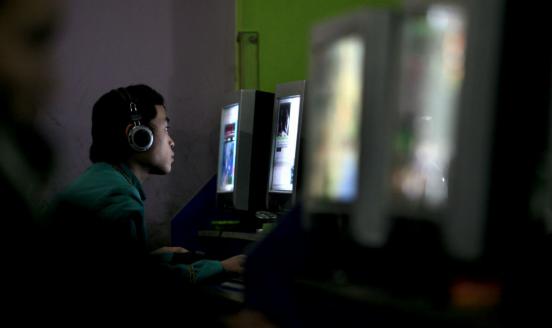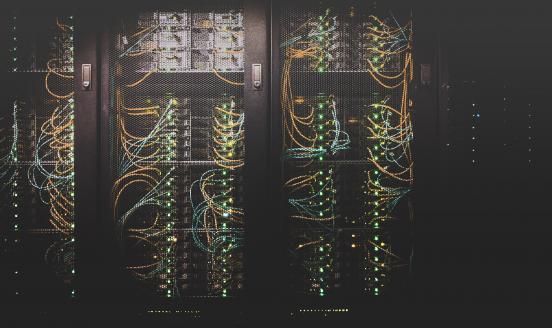Artificial intelligence: how to get the most from the labour-productivity boost
Artificial intelligence should boost productivity over time. The boost can happen sooner, and last longer, with the right policies.

In the last decade, labour productivity growth has slowed, despite the fast development of new efficient general-purpose digital technologies, including machine learning and artificial intelligence (AI). This productivity slowdown is a paradox. Does it mean the hopes about the potential of these technologies to transform societies and improve people’s lives were false? A paper by Petropoulos and Kapur (2022), prepared for the Transatlantic Expert Group on the Future of Work, discussed what lies behind this paradox and makes policy recommendations on how to get the most out of AI in terms of productivity and economic growth.
As a starting point, Brynjolfsson et al (2021) showed there are deeper causes of the AI productivity paradox. AI is a general-purpose technology that penetrates many economic sectors. Analogous technologies with such a general scope include the steam engine, electricity and computers. A common characteristic of these technologies is that for each, it took years after their introduction for the pay-off to be seen in the productivity statistics. For instance, after the introduction of electricity in American factories, productivity was stagnant for over two decades. Only after managers re-invented their production lines using distributed machinery, a technique made possible by electricity, did productivity belatedly surge. Each general-purpose technology requires the development of sufficient complementary innovations and adjustment of the demand side, in order to have an impact on productivity.
In the case of AI, these complementary innovations involve intangible capital. Firms need to rethink their business models, managers need to develop expertise for the digital age, workers need to be retrained to interact with these new technologies, and complementary web applications and software need to be designed. Without these complementary innovations it is hard for AI to boost productivity. Therefore, over time, there will be two distinct phases in the impact of AI on growth: an initial phase when intangible capital is created and accumulated, followed by a productivity boom.
The fact that the AI productivity boom is expected does not mean just waiting for it to happen. Careful thought needs to be given to which policies will help the boom phase arrive earlier and to last longer. A proper policy framework should identify and mitigate the bottlenecks to the realisation of the economic and social benefits of AI.
AI bottlenecks
One bottleneck has to do with firms’ financial constraints. Acemoglu et al (2022) showed that the most frequent reason for not adopting AI is that non-adopters find AI technologies expensive within their business models and production functions.
Specific policies should be prioritised to maximise knowledge spillovers without impeding innovators’ incentives. Knowledge spillovers have traditionally been a central objective of government policy interventions. In the context of a strong intellectual property regime that keeps the value of innovation high, policies that aim at wider diffusion of AI technologies can be beneficial in building the intangible capital needed to arrive at the productivity boom phase. Becker (2015) and Bloom et al (2019) illustrated how R&D tax credits for AI investments can work well towards this goal.
Many countries provide incentives for research and development, such as allowing additional deductions against tax liabilities. However, national measures differ in terms of their generosity. An overall estimation by Bloom et al (2019) concluded that a 10 percent fall in the tax price of R&D leads to at least a 10 percent increase in R&D in the long run. Hence, AI tax credits can prompt the diffusion of these technologies, and could contribute to a significant accumulation of intangible capital in order to reach a critical mass, putting the economy on the productivity boom path.
The second bottleneck is methodological and has to do with being able to measure the impact of AI. Specifically, new frameworks are needed that are more suitable for measuring the contribution of AI to productivity (Brynjolfsson and Petropoulos, 2022). Current measurements, such as GDP, are insufficient when they only factor in tangible goods and services that are offered at positive prices. In the digital economy, many intangible goods and services are provided at no financial cost to consumers. These still increase consumer welfare, create jobs and generate profit. Moreover, advancements in AI decision-making and prediction could generate new opportunities for economic growth that have never previously been realised.
Also needed are policies that focus on the supply of human capital, especially the training of managers and AI talent. Managers should become more familiar with the practical implications of AI in order to contribute to the reorganisation of work, towards a model in which AI machines and labour act as complements. This is important to avoid the risk of excessive automation. As Elon Musk put it: “Yes, excessive automation at Tesla was a mistake. To be precise, my mistake. Humans are underrated”[1]. There is a risk that managers choose to overinvest in automated technologies that do not add much in terms of productivity, while neglecting the productivity boost of combining labour and AI capital in a harmonious way. Alongside investment in AI, managers should change fundamentally their perspectives on how their firms should adjust their work environments so workers can become more efficient by using AI machines. A human-centric approach is needed in industrial production and the provision of tasks, in order to grasp the full benefits of technology.
Acquiring capable AI talent is an important part of this. The complementarity between workers and AI systems requires workers to be well trained on how to interact with AI machines, in order to maximise the efficiency of production processes.
However, AI talent is currently very concentrated in a few superstar firms. Wang et al (2021) used US online job posting data from Lightcast from January 2010 to June 2020, and found that the top employers account for a large percentage of the total demand for frontier technology skills, including AI, machine learning, natural language processing, cloud computing and big data. More than a quarter of all job vacancies in the last decade that required AI skills were posted by the top 10 firms that employed people with AI skills. The respective concentration percentage of more ‘traditional’ information technology skills is only 6.9 percent. Wide adoption of AI in order to maximise its knowledge spillovers, and therefore its social benefits, would require smaller firms to be able to hire AI experts, which will help them make complementary investments in intangible capital in order to grasp a fair share of these benefits.
Market power failure
In addition to education and training, another reason for the shortage of skills, especially in small and medium enterprises, has to do with the increased market power of the big companies (Philippon, 2019). This leads to only a small portion of firms capturing most of the talent and the benefits from AI technologies, and thus consolidating their positions in the markets in which they operate.
Addressing the market-power failure in AI-related markets would require a combination of market regulation, competition policies and labour-market policies (Parker et al, 2022). Market regulation should set the basic principles of operation so that specific firms do not have an unfair competitive advantage that allows them to grow at the expense of their competitors, even if they are not more efficient in terms of production costs and quality of products and services. Competition policy should ensure that these regulatory principles are enforced, enabling antitrust authorities to intervene in a timely manner and to have access to relevant information, in order to evaluate cases of market misconduct. Labour-market policies should embrace flexibility, allowing AI talent to flow across different firms, but policies should also give workers adequate social protection.
Meanwhile, employment contracts should be adjusted to incorporate opportunities for life-long learning, because in the age of AI skills depreciate rapidly. Different jobs have different training needs in terms of keeping up to date with relevant technological developments. On-the-job training should be designed taking into consideration the occupational characteristics and how dynamically these characteristics evolve due to technology.
The results in Deming and Noray (2020) are striking. They studied the impact of changing job skills on career earnings for US college graduates. They found that college graduates in all fields experienced rapid earnings growth. Yet the relative earnings advantage for graduates in subjects such as computer science, engineering and business was highest at labour-market entry and declined rapidly over time. Flatter wage growth for technology-intensive majors coincides with their faster exit from career-specific occupations. This implies that in order to prolong technology-intensive careers, investments in human capital should not stop at the point of entry into the labour market. Continued investment in lifelong learning and training is needed, especially as digital technologies penetrate more and more sectors and occupations.
AI, as a general-purpose technology is expected to affect various aspects of our lives. Getting significant economic and social benefits from it requires a multidimensional policy toolkit to defined. If this promotes a human-centric approach, it will result in widespread adoption of AI, increasing innovation, competitiveness and social welfare.
References
Acemoglu, D., G.W. Anderson, D.N. Beede, C. Buffington, E.E. Childress, E. Dinlersoz ... N. Zolas (2022) ‘Automation and the workforce: A firm-level view from the 2019 Annual Business Survey’, NBER Working Paper w30659, National Bureau of Economic Research
Becker, B. (2015) ‘Public R&D Policies and Private R&D Investment: A Survey of the Empirical Evidence’, Journal of Economic Surveys 29(5): 917-942
Bloom, N., J. Van Reenen and H. Williams (2019) ‘A toolkit of policies to promote innovation’, Journal of Economic Perspectives 33(3): 163-84
Brynjolfsson, E. and G. Petropoulos (2021) ‘The coming productivity boom’, MIT Technology Review, 10 June
Brynjolfsson, E., D. Rock and C. Syverson (2021) ‘The Productivity J-Curve: How Intangibles Complement General Purpose Technologies’, American Economic Journal: Macroeconomics 13(1): 333-72
Deming, D.J. and K. Noray (2020) ‘Earnings Dynamics, Changing Job Skills, and STEM Careers’, Quarterly Journal of Economics 135(4): 1965-2005
Parker, G., G. Petropoulos and M.W. Van Alstyne (2022) ‘Digital platforms and antitrust’ in E. Brousseau, J.-M. Glachant and J. Sgard (eds) The Oxford Handbook of Institutions of International Economic Governance and Market Regulation, Oxford University Press
Petropoulos, G. and M. Kapur (2022) ‘Artificial intelligence: increasing labour productivity in a responsible way’, Transatlantic Expert Group on the Future of Work, available at https://www.bruegel.org/sites/default/files/2022-11/TEG_241122_1.pdf
Philippon, T. (2019) The Great Reversal: How America Gave Up on Free Markets, Belknap Press of Harvard University Press
Wang, J., G. Petropoulos, and S. Steffen (2021) ‘Concentration of artificial intelligence and other frontier IT skills’, Bruegel Blog, 21 October



